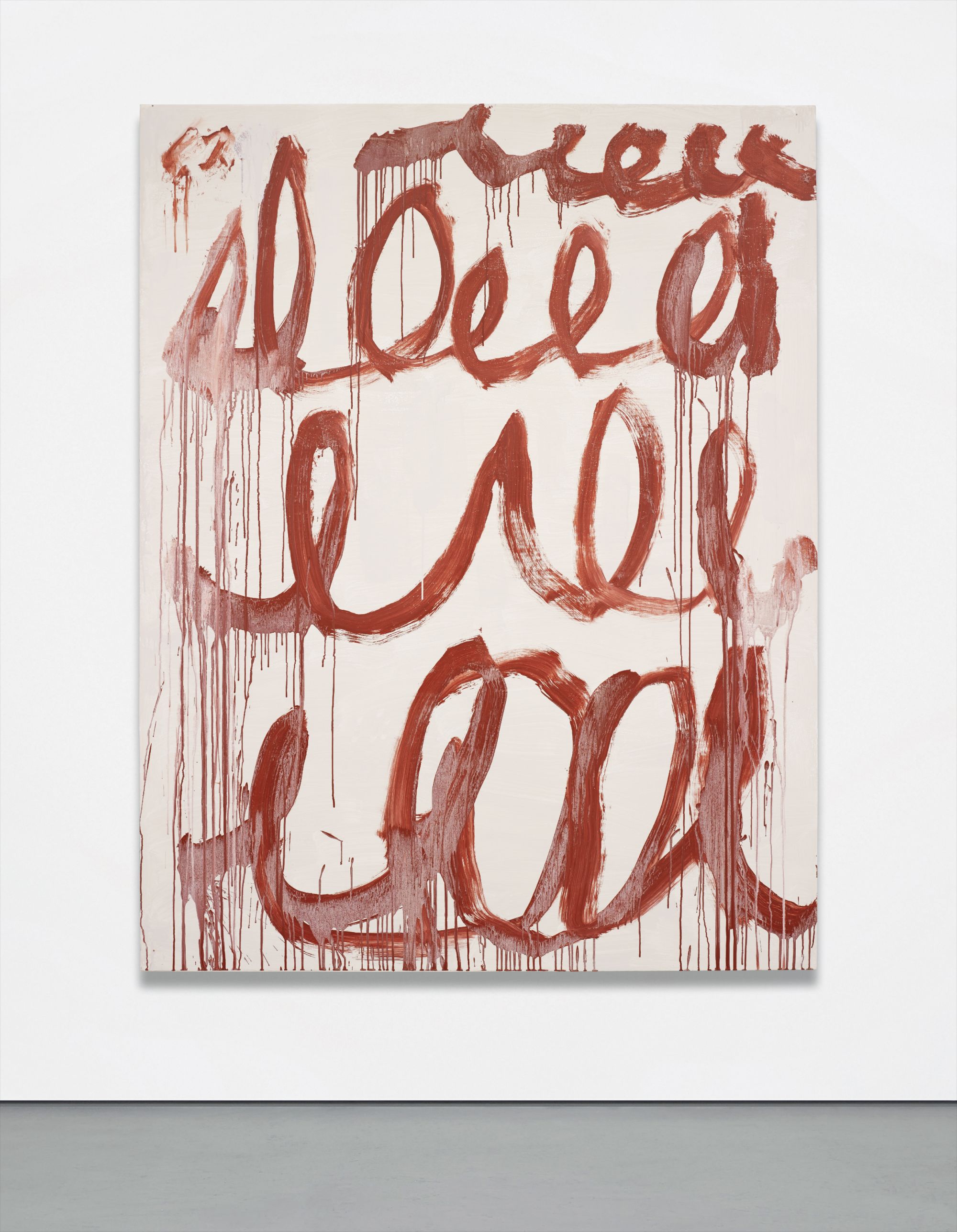

20
Cy Twombly
Untitled
Full-Cataloguing
Each work from this series, whilst unique in character, shares a vertical format and similar height, with slight variations in width. Similarly every painting is untitled and depicts crimson red lines flowing in circular motions reminiscent of handwriting. The densely layered lines swell and break off, and even come to a halt as they move across the picture plane in what seems like an ecstatic dance. It is through the sinuously curving forms that Untitled gains its paradoxical appearance characterised by its constrained rhythmical fluidity as much as its expressive calligraphy.
With its grounding in the tradition of European expressionism Twombly’s canvas evokes an impression of lightness, untainted by the skeins of paint and chaos of the looped shapes. Divided into clear sections, the running calligraphic scrawls emerge as an exercise in repetition, as if a schoolchild were learning to write. Twombly employs a linear continuity that had specifically been excluded in earlier works from the 1960s. On the other hand, the artist’s frequent use of the 'O' shape is once again employed in this composition, thus harking back to pieces such as Olympia, 1957. It is this association to his earlier works which prompts us to reflect on the development of Twombly’s symbolic language in the present lot. His forms have developed into abstract signs which, despite their illegibility, create a mode of communication, concealing the artist’s narrative therein.
Untitled is separated into four main horizontal bands: it begins at the top left with the initials 'C.T.' followed by a garland of paint. Three horizontal rows follow below, each increasing in magnitude as the lines approach the bottom of the canvas and becoming more loosely connected as they do. The overlapping and billowing handwriting is tour-de-force in its nuances of tone, brightness, and saturation. The vertical format of the painting, its light coloured background, and the organization of the cursive lines invite us to “read” the present lot like the page of a book. Twombly introduces himself at the top of his text with his initials and then, withdrawing from any legible writing and coherent language, begins a non-verbal narrative. His brush produces shapes that recall cursive handwriting, and tells the story of sloping lines and dripping rivulets. The vitality of the signs promotes a desire to read and interpret them; however, existing in their own realm of symbolism, they are destined to remain obscure. The challenge of deciphering the text is as much part of the painting as the visual drama of its mystery. At the end of his seven-decade career, Twombly unites all the contradictory elements of his oeuvre.
Cy Twombly
American | B. 1928 D. 2011Cy Twombly emerged in the mid-1950s alongside New York artists Jasper Johns and Robert Rauschenberg. While at first developing a graffiti-like style influenced by Abstract Expressionist automatism–having notably studied under Franz Kline and Robert Motherwell at the legendary Black Mountain College between 1951 and 1952–Twombly was a prominent figure in the new generation of artists that challenged the abstract orthodoxy of the New York School. Twombly developed a highly unique pictorial language that found its purest expression upon his life-defining move to Rome in 1957. Simultaneously invoking classical history, poetry, mythology and his own contemporary lived experience, Twombly's visual idiom is distinguished by a remarkable vocabulary of signs and marks and the fusion of word and text.
Cy Twombly produced graffiti-like paintings that were inspired by the work of Willem de Kooning, Jackson Pollock and Robert Motherwell. His gestural forms of lines, drips and splattering were at first not well-received, but the artist later became known as the leader of the estrangement from the Abstract Expressionism movement. Full of energy and rawness, Twombly's pieces are reminiscent of childhood sketches and reveal his inspiration from mythology and poetry.